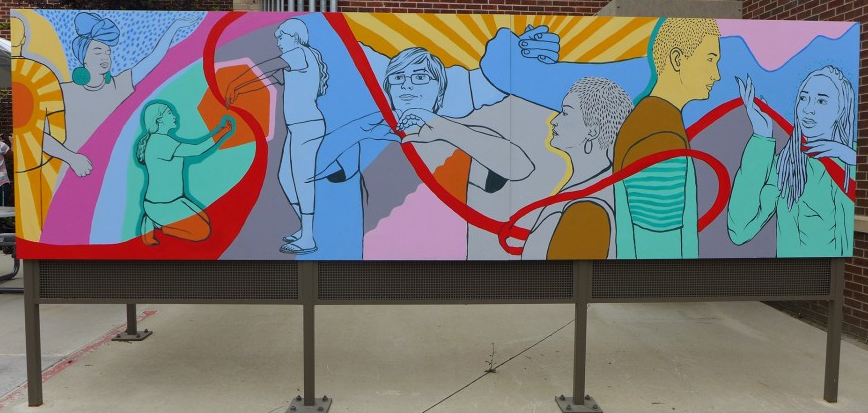Image by Rose Jaffe Colorado State University, made in collaboration with high school youth, Fort Collins, CO (source)
“The confidence that comes from belonging helps you try new things that may be hard or scary on their own and nearly impossible without it.” (Wise, S. 2022, p. 18)
The first week of class is often an exciting time and may evoke some adrenaline for us as instructors. Will I be able to connect with students and communicate everything I need to? How will I ever learn their names? What will be their first impression of the class – and of me? But for students entering your classroom (online or in-person) on that first day, this may not just cause an adrenaline rush, it may be downright terrifying. Chances are that most students will consciously or unconsciously decide during the first week or class whether this is a space where they feel they could belong.
Why is belonging important for learning?
Belonging invites us to show up as ourselves, it enables us to try new things and it motivates us. In the words of Camille Farrington, “Human learning is socially constructed: we come to understand the world through our interactions with others. Feeling part of a community of learners is a powerful motivator.” (as cited in Wise, 2022, p. 18). Without some sense of belonging, taking risks, engaging in a challenging task or in collaborative work may be impossible. All of which are essential for learning.
In Belonging: A Culture of Place (2009), bell hooks addresses critical issues around race and gender as she describes belonging as a place where we feel safe and wanted. Whoever each student is, and whichever expectations, abilities, experiences of privileges or discrimination, preconceptions, concerns, doubts, or questions they show up with, I suggest that our job – especially in that first week of class – really comes down to answering one question for each student: Yes, you belong here!
How do you foster a sense of belonging for all students?
How do you design for community and inclusion? Susie Wise’s book Design for Belonging (2022) is a great place to start. Complete with stories, tools and tips from scholars and community leaders, it offers ample inspiration to help us design for belonging in our classrooms. We, in the CTE, have also previously shared ideas for starting your year of right, about getting your and your students off to a strong start, the importance of building community (i.e. a community of inquiry), and there’s no shortage of scholarly literature in teaching and learning that encourages us to humanize our syllabi (i.e. Pacansky-Brock, M., 2021), communicate an inclusive welcome right away (i.e. Hogan & Sathy, 2022) and find engaging and inspiring ways to begin a term (i.e. Davidson & Katapodis, 2022).
So, I invite you to create and co-create that invitation to belong as you prepare for the term and meet your fall students! The reward of entering a classroom where everyone feels they belong will speak for itself.
References:
Davidson, C., & Katapodis, C. (2022). The New College Classroom. Harvard University Press.
Hogan, K. A., & Sathy, V. (2022). Inclusive Teaching: Strategies for Promoting Equity in the College Classroom. West Virginia University Press.
hooks, b. (2009). Belonging: A Culture of Place. New York: Routledge.
Farrington, C. (2014). Failing at School: Lessons for Redesigning Urban High Schools. New York: Teachers College Press.
Pacansky-Brock, M. (2021). The liquid syllabus: An anti-racist teaching element. Colleague 2 Colleague Magazine, 1(15).

Bettina, thank you for sharing these excellent resources! Perfect timing, I am brainstorming ideas on how to create an inclusive and welcoming classroom atmosphere where all students feel that they belong here.